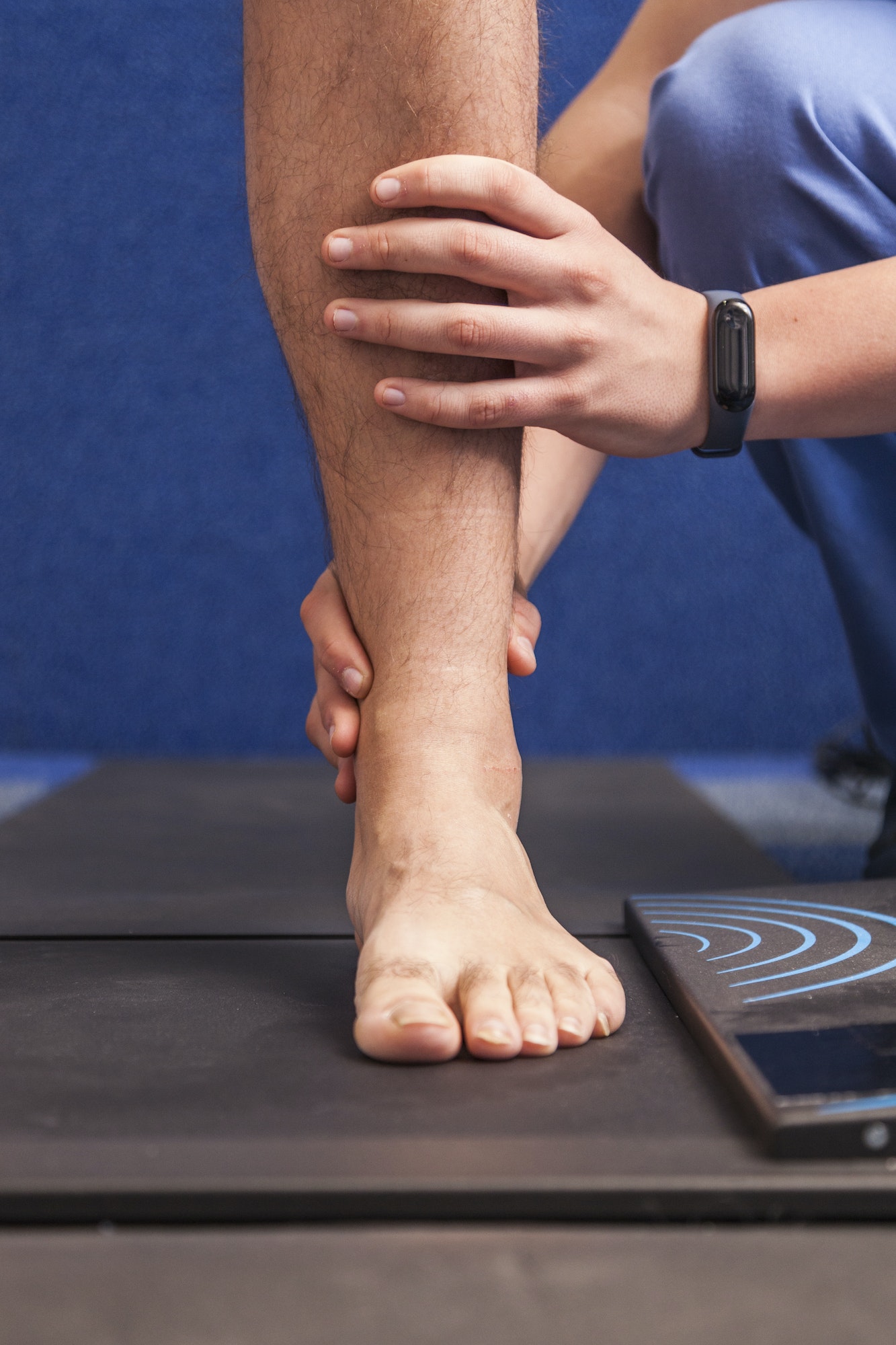Table of Contents
Here are 8 abnormal nail findings to monitor for:
Black or purple toenails
If one or more of your nails appears blackened or purplish in color, this was probably due to trauma or some other type of micro-injury causing bleeding under your nail. Stubbing your toe, running long distances, wearing tight shoes, or even shoes that are too big can cause these nail changes. These types of injuries may or may not be painful. If they are severely painful, that could be an indication of a broken toe. Often these color changes improve on their own as the new nail grows out. In cases where there is excessive bleeding under the nail, the nail may loosen to the point where it falls off. If nails become darker without any noticeable injury, it could also be a symptom of B-12 deficiency, anemia, bacterial infection, or in rare cases even cancer. It is always advised to have a medical professional examine any nail changes to rule out any underlying health conditions.
Yellow toenails
Toenails that appear yellow or brownish in pigment are usually a sign of a fungal infection. Toenail fungus often begins with an athlete’s foot infection underlying the nail, which then spreads to the toenail itself. Yellow coloration is often accompanied by nail thickening with a dry and crumbly texture. Due to the various organisms that can cause toenail fungus, the infection may in some cases cause the nails to appear green, reddish, or black rather than yellow. Toenail fungus can often be treated by oral or topical antifungal medications, depending on the type of the infection and how far it has advanced.
Bluish toenails
When your nails turn blue or light purple in color, it may be a sign that your toes are not getting proper circulation. This frequently indicates the presence of a health condition called Raynaud’s disease, which causes narrowing of the smaller arteries which supply blood to the extremities. If your nails have a bluish hue and you notice that your fingers and toes feel unusually cold, Raynaud’s is often a possible diagnosis.
White toenails
Whitening of the toenails may be an indication of several different underlying health conditions, some of which may be serious. This finding could be as simple as a deficiency in dietary calcium or protein. White toenails can also be a side effect of health issues such as anemia, heart, kidney, or liver disease, diabetes, or rheumatoid arthritis. White toenails are not an urgent concern but should be brought to the attention of your physician, along with any relevant family history or possible symptoms that you are experiencing.
Toenails with white spots
When your toe undergoes microtrauma and is not severe enough to cause visible bruising, it may result in the appearance of white spots or lines on the nail’s surface. These spots typically heal on their own, growing out to a point where they can be clipped off. White lines on the nails may also indicate a deficiency of zinc or iron. If you notice the recurrence of white spots over time with associated pain, a podiatrist may be able to help with simple interventions such as insoles, cushions, or recommending more accommodating footwear.
Ridged or bumpy toenails
There are a few different reasons that may cause nails to become stiff, brittle, and ridged. Microtrauma, similar to that which causes bruising to the nail plate, may be a cause. This nail finding is commonly seen in people with rheumatoid arthritis. In some cases, the appearance of ridged nails may be caused by the physical impact of mental or emotional stress.
Toenails with dark streaks
Dark streaks under the toenails are associated with health conditions that may be mild or severe. People with darker skin complexion often have these nail findings called linear melanonychia; a harmless condition in which these darker shades are produced by pigmentation (melanin) deposits in the nail. In rare cases, black streaks within the nail may be a sign of serious medical problems like skin cancer, HIV, endocrine or connective tissue disease and other immune disorders. If you notice any new, darker coloration to your nails, it is always advised to be evaluated by a podiatrist to help rule out any serious medical concerns.
Thickened toenails
Trauma to the base of the nail can cause the involved toenail to chronically grow thicker. This is often not a major problem unless it becomes a cosmetic concern or begins to cause pain. Thickened nails often cause toe pain due to the increased pressure to the nail bed when wearing shoes. It is important to maintain proper nail length to avoid irritation to the surrounding skin.
As you see some of the toenail characteristics could be a sign of a more serious problem. If you think you have a toenail problem, don’t hesitate to make an appointment for a checkup with one of our podiatrists.

Meet Weil Foot & Ankle Institute
Weil Foot & Ankle Institute was founded in 1965, by Dr. Lowell Weil Sr, who was inspired by a need to progress the Foot & Ankle Care category into the future through innovation. As one of the first Doctors of Podiatric Medicine (DPM), Dr. Weil…
By: Weil Foot & Ankle Institute, Published: Sep 10th, 2021
Review By: Kristin Abruscato DPT – Jan 19th, 2023


